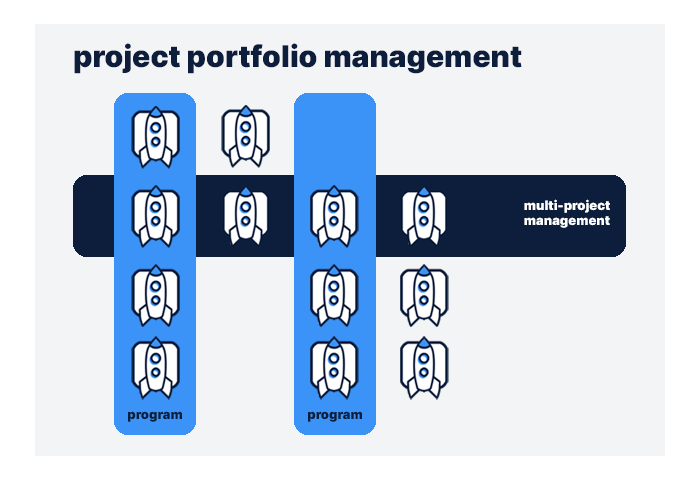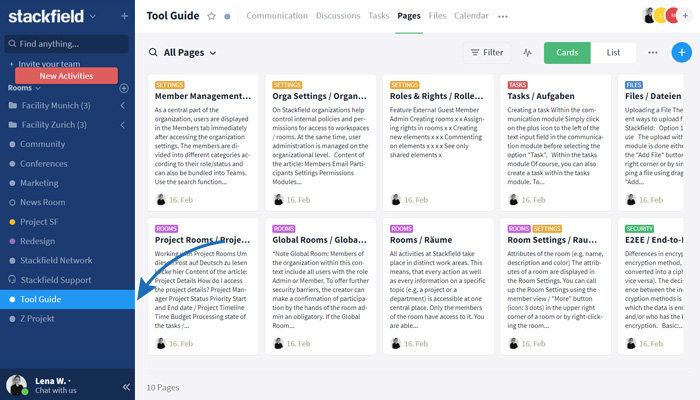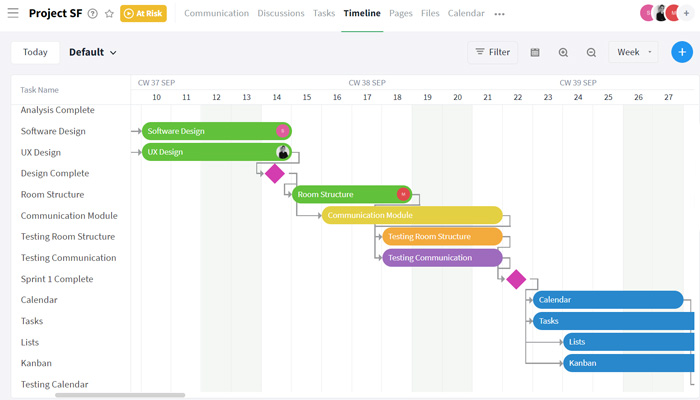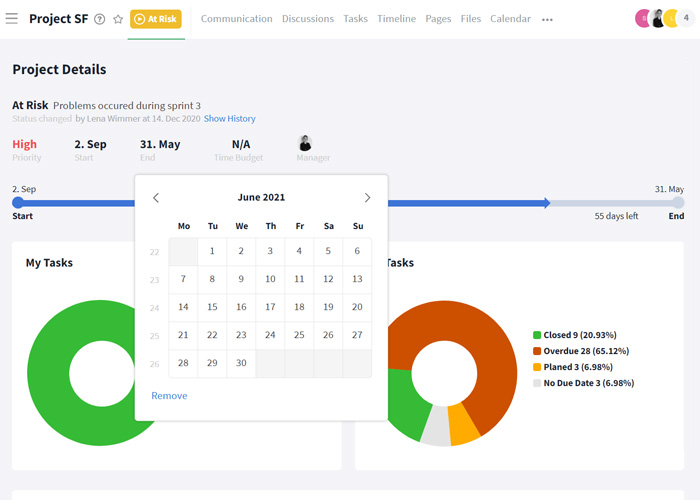One step at a time. The best way to work is to focus on doing one thing before we head over to the next. This is actually a very good approach in almost as all matters, but unfortunately it is not always as simple as that. In companies, people usually don't work on just one project, but on several at the same time.
Why is it important to not only focus on one thing and to keep an eye on the bigger picture in this case? How can I do that? Good questions. That's what we're going to deal with today.
What is multi-project management and what is not multi-project management?
Definition: multi-project management, program management, portfolio management
When several projects run simultaneously, you will most likely come across terms like multi-project management but also program management or portfolio management. Three terms for one and the same thing? Not quite.

But let's start with the core from which all these terminologies originate: the project itself. According to DIN 69901, this is defined as a "undertaking that is significantly defined by the uniqueness of its conditions overall, i.e. its goal or time, financial or personnel and other limitations, delineation from other undertakings or project-specific organisation" exactly defined.
Needless to say, these projects are quite complex matters that need to be planned down to the last detail. And this is where project management comes into play, essentially covering all activities that are necessary to achieve the project goal: from initialization, definition, planning, control to the final conclusion.
As soon as an organization conducts several projects simultaneously, we refer to this as multi-project management (MPM), and multi-projectmanagement is extremely important. It is intended to ensure that potential conflicts between individual projects are taken into account in the course of project implementation, preventing the success of one project from being jeopardized by the requirements of another.
However, you should clearly distinguish the term program management as this essentially describes the management of several related projects that share a common, overarching goal. This means that one program emerges from several interconnected, thematically related projects.
The term portfolio management is often used synonymously with the term multi-project management in everyday usage. For others, however, it is used to describe the totality of all projects in an organization or team.
In short: What do you need multi-project management for?
Multi-project management aims to prevent any potential conflicts of resources or goals between the individual projects that are being carried out in parallel. The goal is to ensure that expected results are not jeopardized by requirements from other projects. Inevitably, this requires maintaining an overview of all ongoing projects - which, even considered individually, can present a complex challenge.
Now, what do you need to pay attention to exactly?
This is what multi-project managers need to take care of
It is important to understand that every project has certain requirements, be it human resources, work equipment or financial resources. The requirements need to be served and this only works by keeping track of what requirements each project has at any given time. The challenges that multi-project managers have to contend with are...
- inadequate oversight in the requirements that individual projects pose,
- unclear dependencies and
- incorrect prioritization,
which, in turn, may lead to
- goal conflicts
- and resource conflicts.
However, for those who regularly align projects in all their stages in the best possible way and keep track of them, there are also opportunities, because this way you can efficiently use synergy effects.
Multi-project management requires the right software solution
A project management software is crucial, especially for multi-project management, as it enables all projects to be clearly displayed and monitored. Without the right tools, it would be simply impossible to keep track of all important data, activities and changes.
Multi-project management therefore requires one thing above all: a central place where you can collect all the important information, clearly structured.
This is how Stackfield supports the monitoring and management of multiple projects:
Projects become manageable in separate rooms
Each project within the organization will be visualized in a separate workspace and executed in collaboration with everyone involved in the project.

These workspaces are called rooms in Stackfield, and there is a very special kind of room for projects, but more on that later.
Each room created in an organization can be equipped with various project-related tools that best support planning and collaboration on individual project requirements. Among the most important for project operations are:
- the pages, used to record project plans and important key data about the overall project
- a file manager that keeps all important files - whether stored individually or originally attached to other items such as tasks - in an organized manner
- a calendar that can be used to schedule important events and meetings during the project
- the task module serving as the centerpiece of your room, allowing the team to record all requirements on functional task cards and to visualize them on a Kanban board or in lists, depending on their purpose
- a Gantt chart, also called timeline, that shows all tasks and milestones in their chronological progression while also taking into account all dependencies between tasks, thus enabling the team to quickly discover bottlenecks in order to make changes to the plan within time
- and the Communication Module, that serves as a project-specific team chat right inside the room - that is, inside the project itself. It keeps all information together and ensures that not only message exchange but also activities remain chronologically traceable.
Special project overviews keep up to date
So, one room on Stackfield already offers all the basic tools needed for project work. But if you want to implement large projects or even several, you need a little bit more.
Stackfield's project rooms were created specifically for monitoring and controlling projects, and include a dedicated project overview in addition to the usual tools for requirements management and project visualization.

With the help of various graphics, it continuously informs those involved about the progress of the project and provides all the important key data - such as priorities, time budget, status and main persons responsible.
Project portfolios support multi-project management
A portfolio that shows all projects within your organization gives you an overall overview.

It shows what priority has been assigned to each project, what their status is at the current time, and what progress they have made. You can see at a glance what projects overlap in time, making them particularly important to coordinate. A click on the project shows gives you quick access to all the important details of the project overview, allowing you to make adjustments as soon as necessary.
Tracking and alignment: To be able to successfully carry out multiple projects, you need one thing above all: a continuous overview. A regular look at the portfolio and the project overviews as well as a consistent comparison of the project schedules (Gantt charts) will support you in this task.
Tips and must-do's in multi-project management
If you want to make sure all your projects go according to plan and are optimally aligned (stay that way, too), try to keep the following tips in mind.
Detailed project planning
Proper project planning is not only the basis for multi-project management, but also for successful execution of the individual projects themselves. Those who do not take enough time for planning will very likely atone for this in the further course.
Tip: Your project planning is essentially based on the project scope, resources and time budget. Create the project plan in detail and with foresight and also include possible risks that may arise in the course of the project. If several projects are to run in parallel, it is important to balance the resource requirements and to consider synergies in the planning. That way, you'll be able to bundle the right projects - those that benefit each other in their execution and whose resource needs don't get in each other's way.
Setting Priorities
You need to provide for all contingencies. What if there is a resource shortage? What if time constraints arise? The correct prioritization of projects is indispensable in this regard. This includes the individual requirements within the projects, as well as the projects themselves.
Tip: Determine exactly what priority the individual projects have for the overall business goals. If it comes to resource problems, you should be able to tell exactly what project has priority. Equally important is the following questions: What tasks within the projects have priority so as not to jeopardize their associated project and what projects can cope with changes and deviations better than others?
Creating a central information base
As mentioned, regular reconciliation and ongoing monitoring of projects are essential when it comes to multi-project management. However, this only works properly if all important information is in a central location that can be accessed quickly and easily.
Tip: Choose a central project management software that allows you to visualize all projects and to track them collectively. Processes must remain traceable, which is why it is also not recommended to let the project communication run in a separate tool. Communication should always take place directly at the tasks within the project, to ensure that information is not scattered randomly and that those involved are not missing anything important.
Keep status and key data up to date
To be able to adjust projects if necessary for smooth execution in parallel, changes in the planning of individual projects should be obvious at all times.
Tip:Deposit information on the project status and important changes to the plan, that could have an impact on capacity planning, always directly and inform the project members. Key data should always be available and up to date for everyone involved. Changes that have a massive impact on the status of the project can be noted directly in the project overview.
Multi-project management fails with a lack of transparency
As soon as you need to run more than one project, you need clear and transparent multi-project management. Project teams face a number of challenges, most of which can only be overcome if management maintains an overview at all times and continuously coordinates capacities as well as schedules, observes priorities and properly communicates all changes.